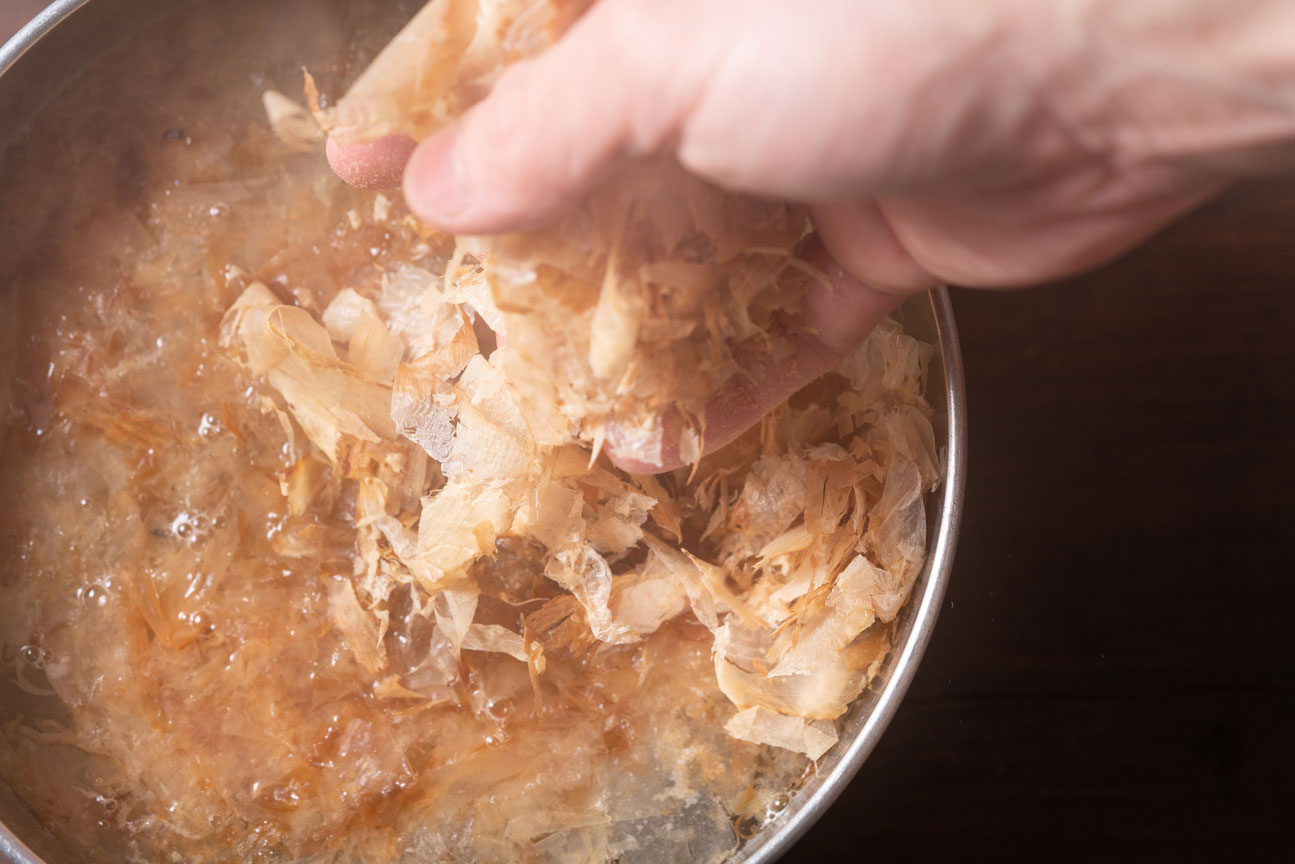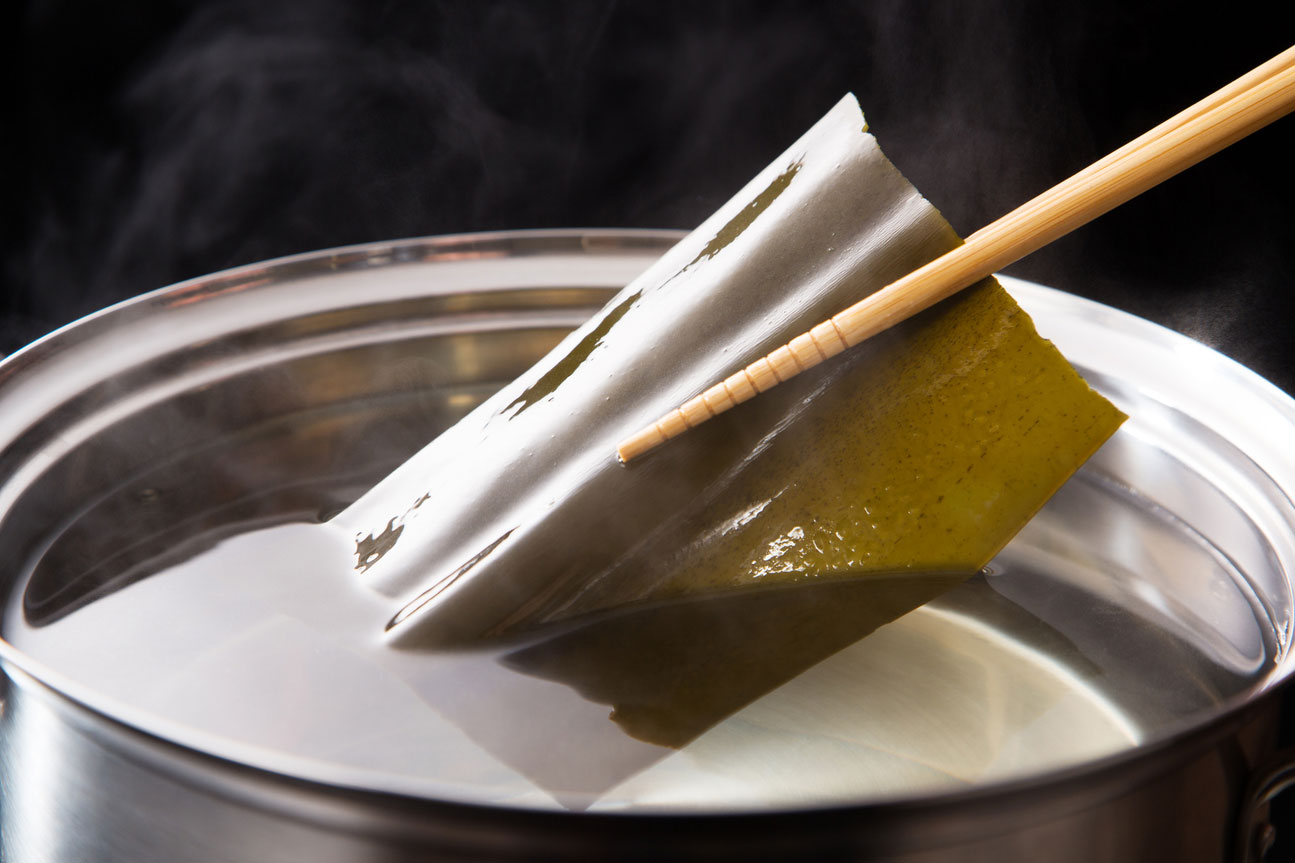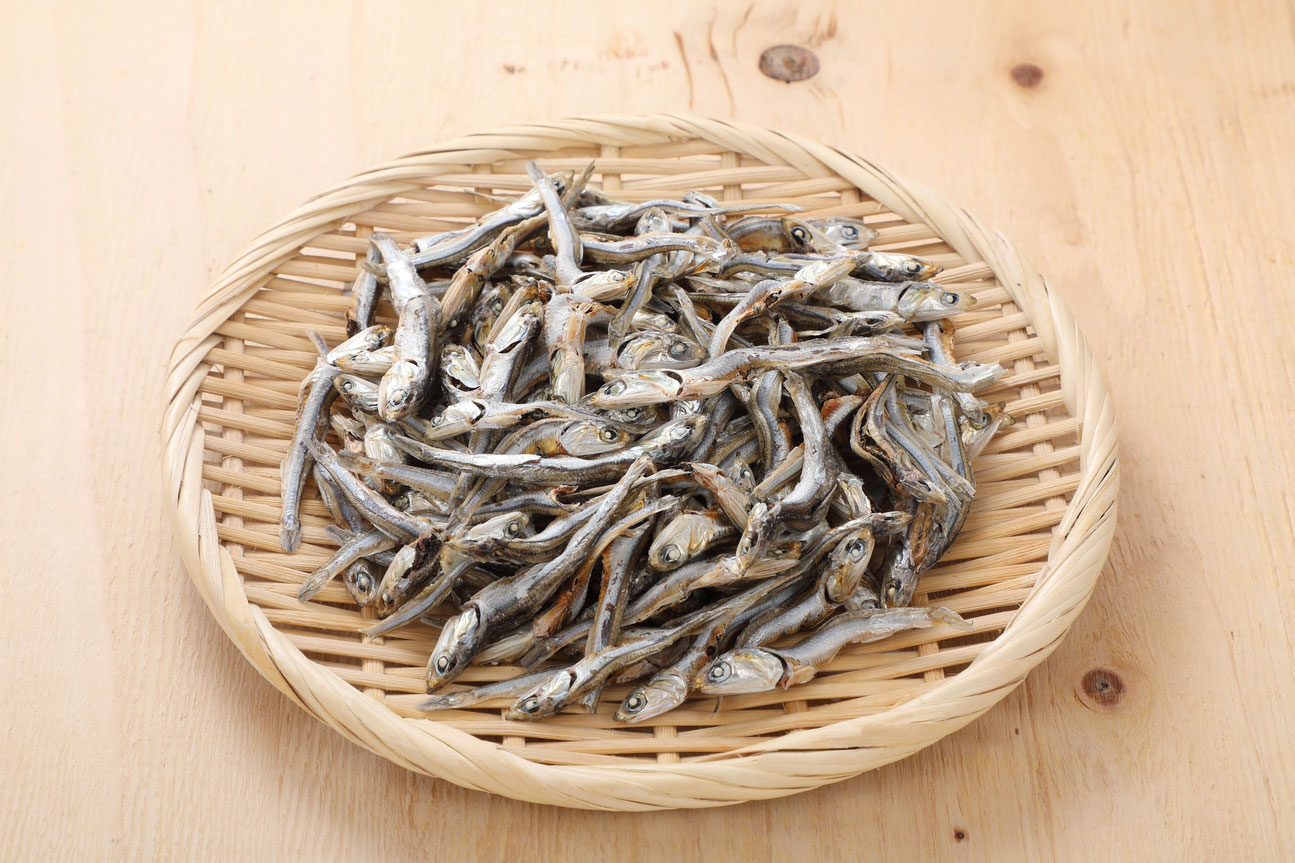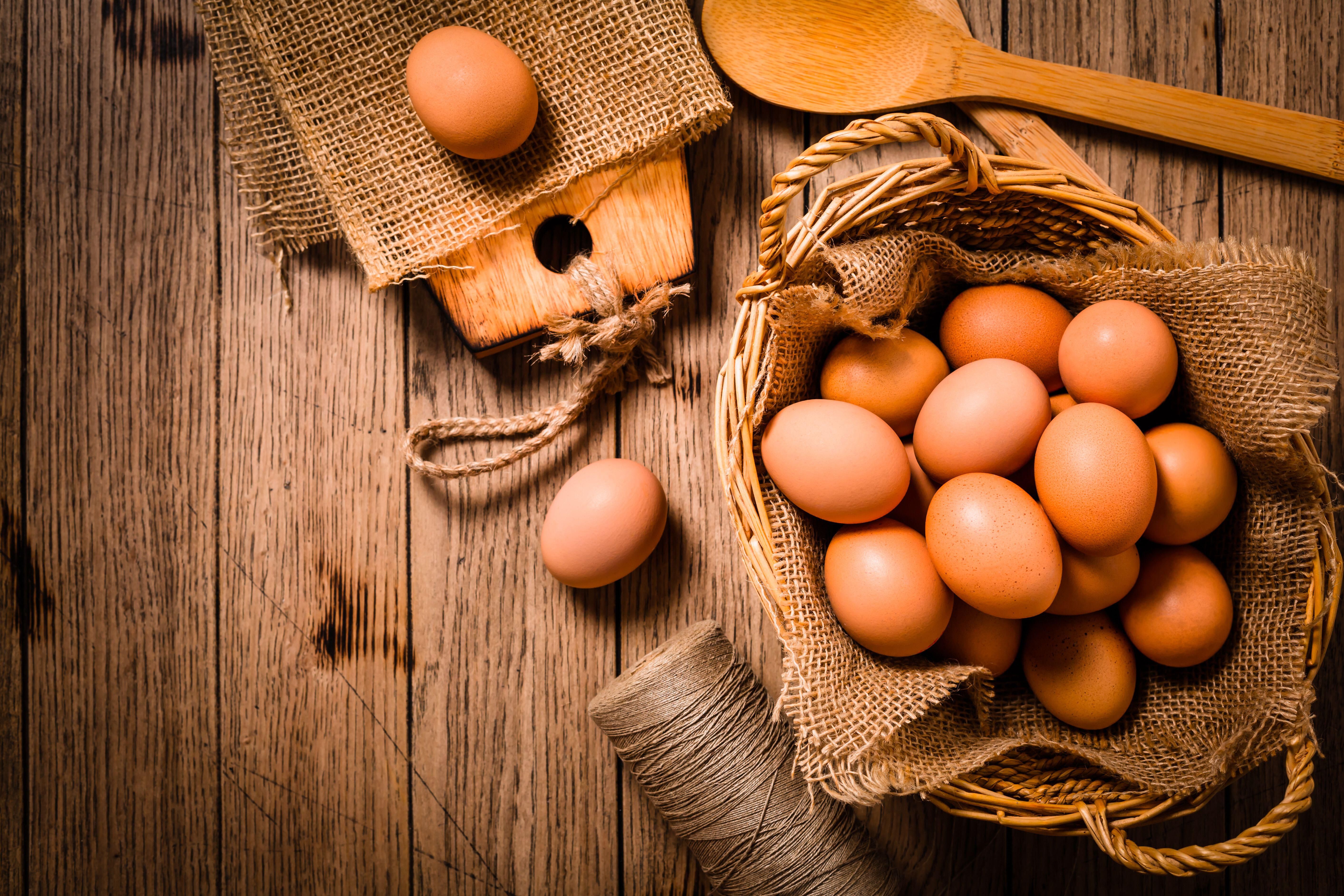
Dashi Made Easy: Bringing Authentic Japanese Flavors to Your Kitchen
If umami, or savoriness, is the soul of Japanese cuisine, then surely dashi is its heart. Dashi is the cooking broth that is the integral ingredient of Japanese food, for it is responsible for adding the distinct, deep umami flavor to even the simplest dishes, such as clear soups or simmered vegetables. Because of its importance in giving authenticity to Japanese dishes, it is an essential item to have in the kitchen of every home cook.
There are a number of instant dashi products on the market, making it easy for cooks to employ them in any recipe. But Yukiko Umetsu stresses the simplicity and quality of home-made varieties, saying no one should be intimidated by complicated dashi recipes. Umetsu has spent the last decade researching dashi and promoting its use, and is the acclaimed author of the book Dashi Seikatsu, Hajimemashita (loosely translated as “Starting a Dashi-based Lifestyle”).

Yukiko Umetsu has made a career of promoting the use of dashi by simplifying its production, and explaining its healthy benefits.
She was inspired on a trip to her hometown in Hokkaido, when her mother made some simple soba noodles and ozoni, a New Year’s stew, using home-made dashi broth. She was so taken with the deep flavor of the dishes that she stopped using the instant dashi packets she’d been using at home and began making her own home-made versions. Since then, she has been promoting ways of making dashi in simple, fool-proof steps for the average home cook. We spoke to her about her fascination with dashi, what is behind the various types, and her suggestions in their creation.
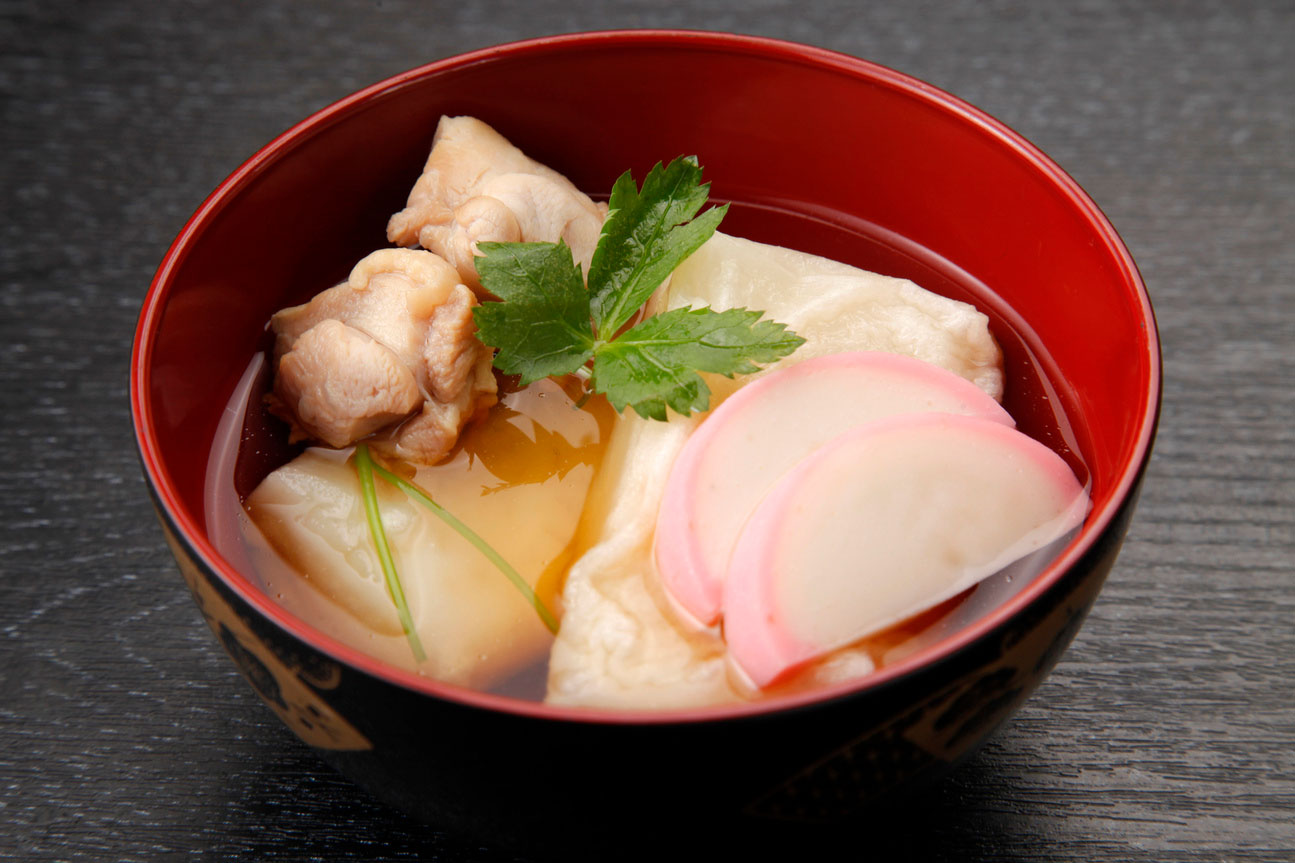
A dish of ozoni, a New Year’s stew using dashi, is rich in umami.
Umetsu suggested four types of dashi, each with its own aroma and characteristics. “First of all, is katsuo dashi, made with dried bonito flakes, which has a rich aroma,” she says. “It’s also the quickest to make.” She says that konbu dashi, the type made with dried kelp, has a lot of flavor and is also very rich. Niboshi dashi is a stock made with dried fish, which is often used as a substitute for the bonito flake dashi. “The price is more reasonable,” she says, “so it’s a good stock for daily use.”
The last major type of dashi is called awasedashi, which is a combination of fish and kelp stock. “Combining ingredients such as kelp, with its glutamic acid, and the fish flakes, with inosinic acid, create a synergistic effect to increase the umami,” Umetsu says. “If kelp is not readily available, you could use canned tomatoes, for example, since the amino acid in tomatoes is the same as that in kelp. That will increase the umami and make the dish many times tastier than just by using a single-ingredient dashi.”
Despite its tasty impact, dashi is a basically simple broth. Bouillon or fond, for example, require a long simmering time, and a number of additional ingredients, such as spices and vegetables. But one of the simplest kinds of dashi, made only of bonito flakes, can be made in a matter of minutes. Another type of dashi made with konbu, or kelp, can be made by simply soaking it in water for a day. “The biggest difference between Western stocks and dashi is that the latter takes so little time and effort, so it is almost impossible to fail,” says Umetsu.
According to Umetsu, even many Japanese are under the impression that making dashi is difficult. So she has come up with some unique ways to combat this. “I recommend using a pour over coffee dripper to make the bonito dashi,” she says. “Just put a regular coffee filter in, add three or four grams of dried bonito flakes and pour 150cc of boiling water over the flakes. In no time, you’ll have some tasty bonito broth.”
Umetsu suggests beginning making konbu or dried fish dashi by just placing the items in a container with water and leaving it in the refrigerator for a day. “For the dried fish, just put about 15 small dried sardines in a liter of water and leave it overnight,” Umetsu says. “The next morning you’ll have a cloudy soup stock with a slightly yellowish color the next morning.” Briefly heating the ingredients first will make more flavorful broths, she says, and can be the next step for those who find making home-made dashi worthwhile. “Heating for 5 or 6 minutes will make a thicker, better tasting dashi, if you have time.”
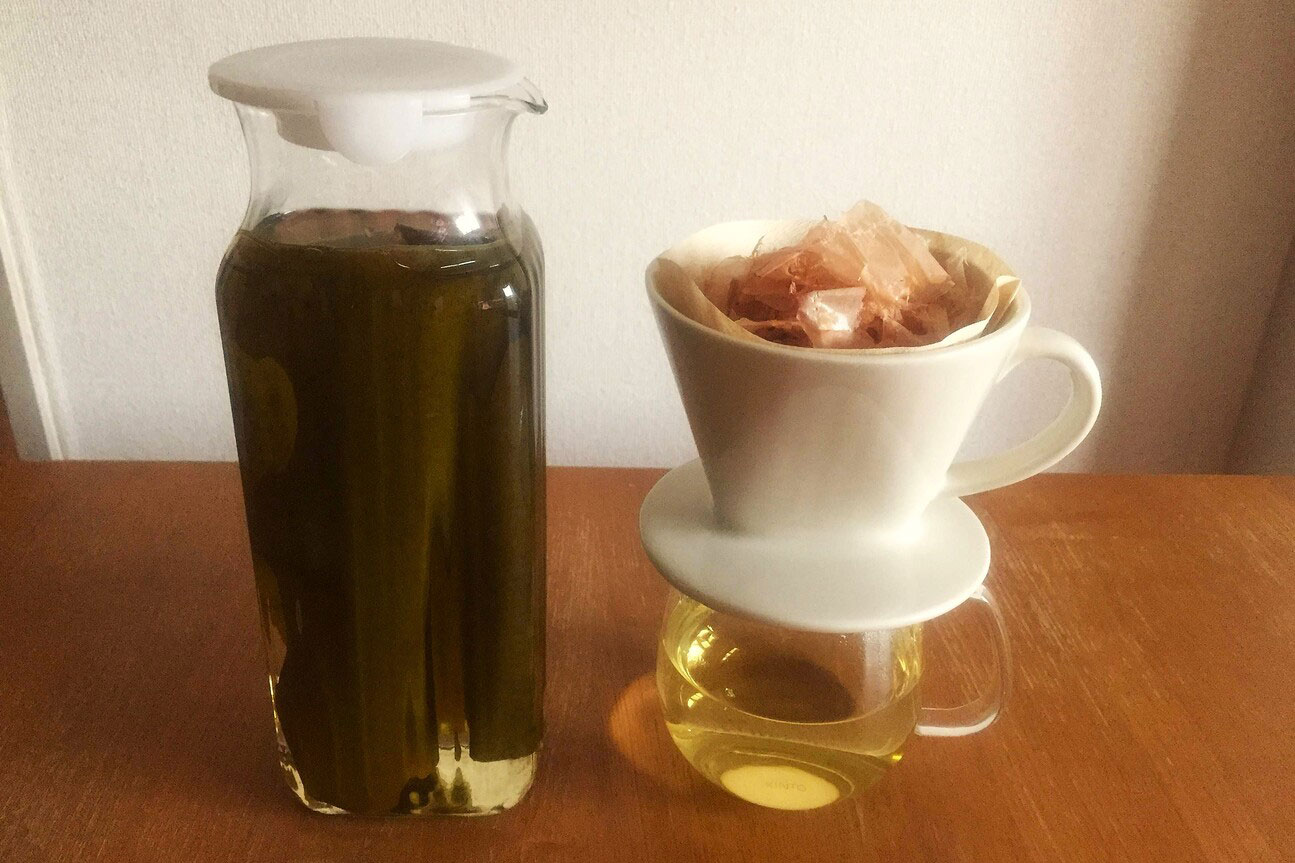
One of Ms. Umetsu’s suggested methods of making dashi the easy way is to put the dried bonito flakes in a coffee dripper and add hot water (right). Konbu (kelp) dashi can be made simply by placing it in water and leaving it overnight or for a few days (left).
If bonito flakes, dried sardines, or konbu can’t be found at local markets, she has some hints for prepared dashi products, the granulated kind that comes in handy packets and liquid versions, both of which are exported overseas. “I suggest choosing a product that does not contain salt or soy sauce,” she says. “It’s healthier and you can add any seasoning later to fit your taste. The only difference between granulated and liquid dashi is that the granulated type has a longer shelf life.”
Many Japanese and overseas foodies assume that dashi can only be used for Japanese food, an assumption that Umetsu refutes. One of her favorites is pot-au-feu, which she makes by replacing consommé or bouillon with bonito flake dashi. “I make it with vegetables, mushrooms, meat, fish, etc., and call it ‘dashi pot-a-feu.’ Because the ingredients make up all the flavor, only a little salt is necessary. I don’t think anyone would consider it as Japanese food,” she says. Another favorite is French toast, also using dashi. “Instead of milk, I use whatever type of dashi I have around,” she says. “I mix it with mirin, add an egg, dip the bread in, and bake it. It’s not a sweet type of French toast, but one that goes very well with things like cheese, bacon, or ham.”
She says dashi can also be styled for vegetarians or vegans. “If you combine several kinds of mushrooms such as porcini or shiitake, you’ll get better flavor. Or add Napa cabbage, which also has a lot of umami. You can make use of tomatoes and onions as well.”
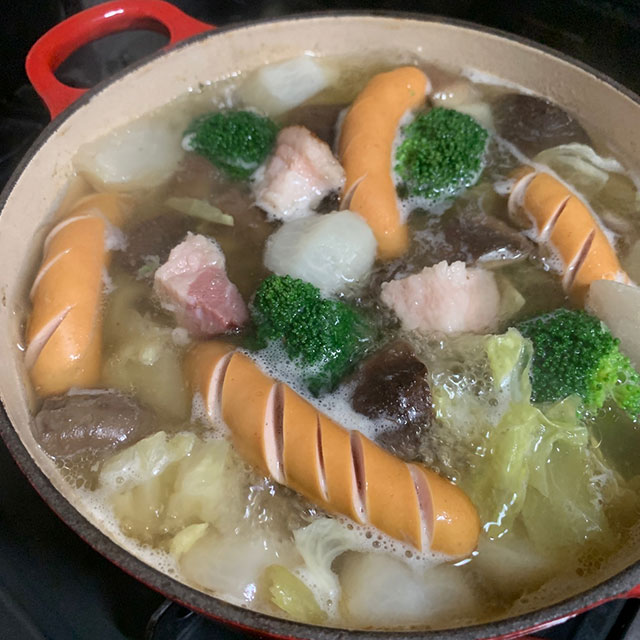
An Umetsu favorite: dashi pot-a-feu, which builds on the flavors of the basic ingredients.
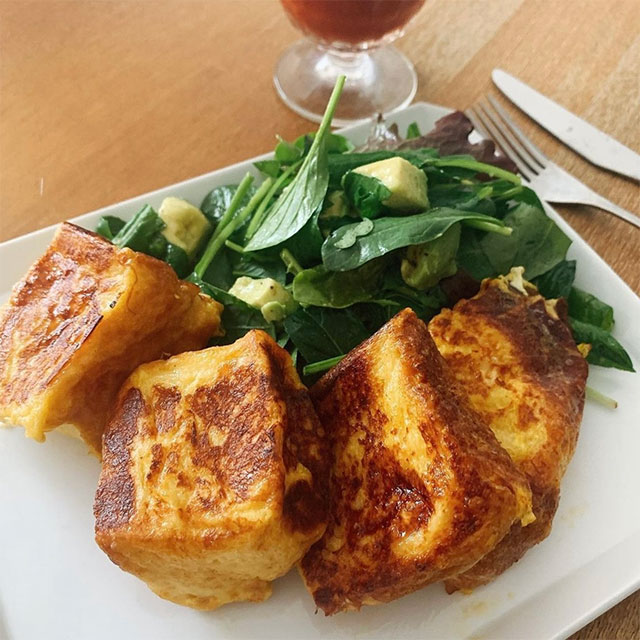
Her recipe for dashi French toast adds delicious umami rather than sugary sweetness.
Umetsu attributes her interest in dashi to a change in her dietary habits, leading to a healthier approach. Because of dashi’s subtle flavors, it can be used as a base for many dishes, and its umami can help cut down on the use of salt. “If you are used to strong, robust flavors, you may feel that it lacks taste at first,” she says. “But as you and your body become accustomed to it, you will realize that it tastes better, lighter, and healthier, and you will probably use less oil.”
Her advice for beginners interested in making their own dashi is to just jump in. “Use my coffee dripper method,” she says. “Or look on the internet, where there are all sorts of examples. The easiest way to learn to live with dashi is to experiment to find the method that is easiest for you. Soon, at a time when you’re making miso soup or some dish that requires broth, you’ll find yourself reaching for that container of dashi—whether it’s konbu, bonito, or a mix—that’s in your refrigerator. That’s when you’ll know you’re leading a tastier, healthier life.”

